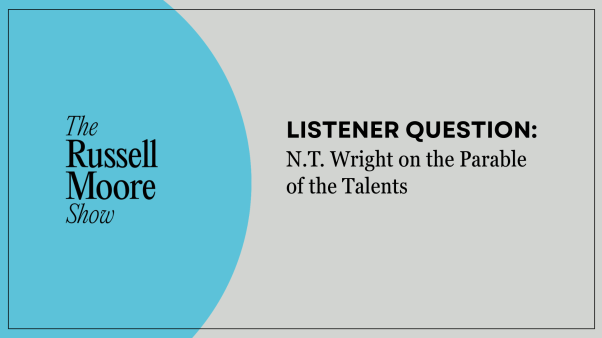A house in the neighborhood was becoming an eye-sore. One junk car sat in the front, another in the back, and trash and weeds ran rampant. So a neighbor called Bob Frie.
“It looks terrible,” the man told Frie, a friend who is also the mayor of Arvada, Colorado. He thought Frie might be able to help. He was right. The mayor knew the first step to initiate a response was to call code enforcement, and that’s what he did.
But something didn’t feel quite right to Frie. And that feeling stayed with him a few months later, in January 2009, as he drove with his wife, Candy, to a meeting convened by a group of local pastors and church leaders. The agenda for their time together was built around one question: If you could eradicate one problem in our community today, what would it be?
There was no shortage of ideas. Arvada, population 106,000 and located just 10 miles northwest of downtown Denver, enjoys good schools, clean neighborhoods and parks, and civic pride, but it suffers from its share of social ills, too. And that’s where local churches wanted to step in.
At the meeting, after sharing his vision in which “no one falls through the cracks,” Frie paused.
“Wouldn’t it be great if Arvada could become a city of good neighbors?” he asked. “You could address a lot of these problems just by teaching the people in your churches how to be good neighbors.”
For the two dozen pastors in the room, their minds raced. Could it really be that simple?
“God was using our mayor to preach to us,” says Dave Runyon, the former teaching pastor of a local church who began convening regular meetings with nearby pastors in 2006. “It got our attention. He is basically telling us we could help the city best by teaching our people to do what Jesus said matters most and love your neighbor.”
In the months that followed, they wrestled with a simple but powerful idea: Local churches might change the world if they taught their people to take Jesus’ teaching in Luke 10 literally. The result is Building Blocks, a program which is growing in Denver and beyond.
Tic-Tac-Toe
In 2010, the Pew Internet and American Life Project asked more than 2,200 adults about their communities. Some 28 percent didn’t know the name of even one neighbor. Only 19 percent said they knew all of them.
One summer evening, after an impromptu outdoor barbecue with his small group introduced him and his wife to numerous people in his apartment complex, Jay Pathak, pastor of Mile High Vineyard in Arvada, began thinking how to encourage the people in his church to meet their neighbors. He drew up a tic-tac-toe grid to visualize this situation. The middle box represents a person’s residence, while the remaining eight boxes represent those surrounding them, be they houses, townhomes, or apartments.
“The diagram is so basic, but it helps people to realize they don’t even know their neighbors’ names,” Pathak says. He and other Arvada pastors began using the grid with their church leaders and congregations, and usually less than 10 percent can name all eight neighbors.
When Runyon’s wife, Lauren, tacked a grid for the first time on their refrigerator at home, they only knew half. “I call this the chart of shame,” Runyon says half-jokingly as he speaks about Building Blocks. Then he turns serious. “What does that say about how well we’re doing about the most basic thing Jesus told us to do?”
“We all need a place to start,” Pathak says. “The challenge is realizing where we are starting from.”
Building Great Neighborhoods
A few months after meeting with the mayor, the church leaders met with Vicky Reier, the assistant city manager for Arvada and herself a member of the Arvada Covenant Church. She told the leaders that she and other city leaders saw no noticeable difference between Christians and non-Christians in terms of their interactions with neighbors. How could they help their congregations grasp the basic teaching by Christ about how to meet neighbors and relate to them?
The pastors came up with a plan for all the churches to teach this theme during a three-week period. They would use the same Scripture passages, but the pastors were free to deliver their messages in their unique styles and voices. They focused mostly on overcoming barriers, such as time or fear, prodding people to knock on doors, host barbecues and parties, and help neighbors with tasks. The goal: to see people move from strangers to acquaintances, and from acquaintances to relationships with their neighbors.
Now 55 Denver-area churches are committed to taking the neighboring message to their combined 27,000 regular attenders. In 2011, they created an interactive map on ArtOfNeighboring.com, which has blossomed with more than 4,000 metro-area households who pledged to connect with their neighbors.
Leaders in Midland, Michigan, and Duluth, Minnesota, learned about Building Blocks and launched similar efforts.
Reier, after nearly 14 years in her role, says the needs in neighborhoods aren’t glamorous, but they’re significant, and the willingness of churches to make this commitment is a win for the cities.
Elderly people need their walks shoveled after snowstorms. Parents need a child watched during an unexpected crisis. Residents feel reassured knowing neighbors might see suspicious activity and act. Encouraging churchgoers to develop relationships with the people around them becomes the natural springboard for meeting those needs. “If you know your neighbors, you feel more invested in their well-being. You notice when things aren’t right,” she says. “Neighborhoods where people know each other tend to be safer neighborhoods.”
More important, Frie says, neighbors who connect relationally establish goodwill. When his friend called about the problem neighbor’s junk cars, trash, and weeds, “I should have gone to that guy first instead of code enforcement,” Frie says in retrospect. “I might have found out the guy was sick or unemployed or needed some help. I felt that a good neighbor would’ve done things better.”
The leaders of Building Blocks hope their movement instills a similar desire to reach out among those attending their churches.
While teaching last fall at Denver Community Church, Runyon drove his point home with Acts 17:26-27. “You didn’t choose to be where you are. God has actually placed you where you are at this point in history and he’s done it for a reason: So that others would perhaps reach out for him and find him, ‘though he is not far away from any one of us,'” Runyon tells the congregation. “If you get this, if you let this sink in, it will change the way you drive in and out of your neighborhood. It will change the way you walk around your neighborhood.”
After the meeting with Frie, “I drove home that day thinking Jesus is a genius. He’s the smartest guy ever,” Runyon says. “Love God with all your heart, soul, and strength, and love your neighbor as yourself—it’s a simple, strategic plan that would change the world if every believer did it,” he adds.
Not an “Evangelism Strategy”
It’s a simple, strategic plan, but it’s “not an evangelism strategy,” Runyon says.
And that’s where some pastors and leaders get uncomfortable. One leader met with Runyon last summer to learn more about Building Blocks. After Runyon explained the concept, the man asked him what method is used to share the message of salvation. Runyon told him participants aren’t prodded to share the gospel with any specific formula or at any specific time in their relationship. The man expressed his doubts.
“The tension in that is pretty interesting,” Runyon says.
But sharing of the Good News does happen.
“When people have significant relationships with their neighbors, they’ll naturally share their stories, and how their stories intersect with God’s story,” he adds. “When people who love Jesus are in relationship with their neighbors, great things happen, period. We share what we love.”
Runyon also believes “people sniff out when strings are attached,” so an evangelistic component forced into the equation only “limits the effectiveness,” he says. Early on, he learned that many city officials were wary of anything that might involve prosletyzing. They had been burned in the past by working with Christians who offered to help, but expected opportunities to proselytize the people being served.
Reier, who says she’s upfront about her faith in her workplace, also says she sees an advantage to letting the sharing of the gospel happen naturally and not as a stated objective.
“The key factor in moving people anywhere in a spiritual life is a relationship. People need to be loved for who they are, respected as human beings, treated with kindness. Born out of that, then people ask you why you are the way you are,” she says. “This truly puts feet on the gospel. It’s not about what I say, but about me living out what I believe.”
In Golden, a city directly west of Arvada, a group of churches started Building Blocks in 2011 and found a receptive audience with city leaders, too, thanks in part to a healthy, eight-year relationship highlighted by regular meetings with civic leaders, pastors doing police ride-alongs, and churches taking a leading role with a citywide initiative to address childhood hunger.
“Go in asking yourself how to humble yourself and serve,” says Dan Thoemke, community pastor for Hillside Community Church in Golden. “As soon as you start helping them make a difference, and you give them all of the credit, the doors swing right open.”
And doors swung open when the group of churches—dubbed “The Together Church” after city leaders began referring to them that way—told the mayor about Building Blocks. At the end of the summer, the churches recruited more than 100 volunteers to visit a section of a local trailer park in need of cleanup and repair. About 20 of those volunteers don’t attend a church, but became involved because of their neighbors’ participation in Building Blocks.
“It starts with people posturing themselves as servants and helping city leaders,” Thoemke says. “We are doing something that will influence and change how we do church.”
More Ministry Opportunities
One night not too long ago, the phone rang at Frie’s home. A neighbor called to ask if he’d go down the street to check on their 14-year-old alone at home because someone was outside throwing eggs at the house. Frie was out the door to see what he could do. Another day, a different neighbor approached him and asked him if he could keep an eye on his house while he went away on vacation. Frie didn’t know him before Building Blocks, but things are different now. “You know when someone has a baby, or needs help with a screen door, or a flat,” Frie says. “Neighbors can pull together to help a neighbor.”
A similar dynamic is playing out on a block in Westminster, a city just north of Arvada, where the Tillapaugh and Crowe families live. About eight years ago, the two families connected and became deeply intertwined in each others’ lives.
Chris Crowe, with the help of her ex-husband, raises eight adopted children, fosters two young adults with physical and mental disabilities, and cares for one placed into their permanent custody. The pace is fast every day between getting kids to school, getting others to and from doctor appointments, getting through grocery shopping, laundry, cleaning, “and meltdowns—mine and the kids,” Crowe quips.
Todd and Karla Tillapaugh and their three children, who moved back to the United States after serving as missionaries to American military personnel in Japan, have become an anchor for Crowe in the midst of these parenting challenges and her divorce three years ago. Their 16-year-old son Zach tutors three of Crowe’s boys. Likewise, Crowe has become deeply invested in the well-being of the Tillapaughs, whether it’s keeping them updated and connected with other neighbors on the street, watching the kids, or letting them know a garage door was left open. All of their kids play together regularly and the doors of both homes are open to each other. “It’s very blended,” Crowe says.
All of them attend Foothills Community Church in Arvada, where Karla also serves as community outreach director. The families already were neighboring in the Building Blocks’ sense of the word, but the initiative pushed them to reach out to more families. They’re now more deeply involved with five families on the street and connected with several more.
“Even though it looks like we’re doing good, we still can get scared, lazy, or apathetic,” says Todd, a vice president with a Christian ministry called Cadence. “Now we’re pulling these four or five families together to say, ‘Okay, how do we look beyond ourselves?'”
That includes the house owned by “Grumpy John,” who hasn’t always been the most receptive to their efforts. They’ve watched for opportunities to serve or visit, usually with limited success. But they continue to try, whether it’s delivering an ice cream sundae during a block party or raking leaves.
“Jesus Christ was as spiritually nonverbal as He was verbal,” Crowe says. “The first house he would go to is Grumpy John’s.”
Matt Branaugh is the director of editorial for Christianity Today‘s Church Management Team.
Copyright © 2012 by the author or Christianity Today/Leadership Journal.Click here for reprint information on Leadership Journal.









